welding rotator
The working principle of the welding rotator is simple. It is mainly used to generate friction between the welding workpiece and the active roller of the welding rotator when it is working.
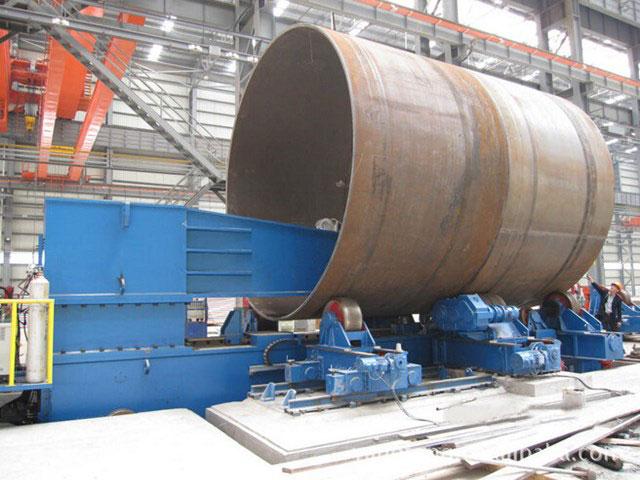
The working principle of the welding rotator is simple. It is mainly used to generate friction between the welding workpiece and the active roller of the welding rotator when it is working.
The working principle of the welding rotator is simple. It is mainly used to generate friction between the welding workpiece and the active roller of the welding rotator when it is working, but the friction will drive the cylindrical or conical workpiece to rotate, so It ensures a good welding effect.
(1) Before the welding rotator is installed, the foundation of the equipment must be done to ensure that the installation position of the equipment is on the same horizontal line.
(2) When the welding rotator is installed, install and fix the equipment according to the installation requirements of general equipment. It can be fixed by expansion bolts (or fixed by pressing plates). During installation, the two sets of rollers must be placed in parallel, and their centers should be consistent. The integrity of all parts of the equipment.
(3) After the welding rotator is installed, check whether each part of the equipment meets the assembly requirements and ensure the normality of the electrical wiring of each part. Check and clean the periphery of the equipment to ensure that there are no obstacles that affect the normal operation of the equipment. Only after completing a few tasks can the equipment be powered on.
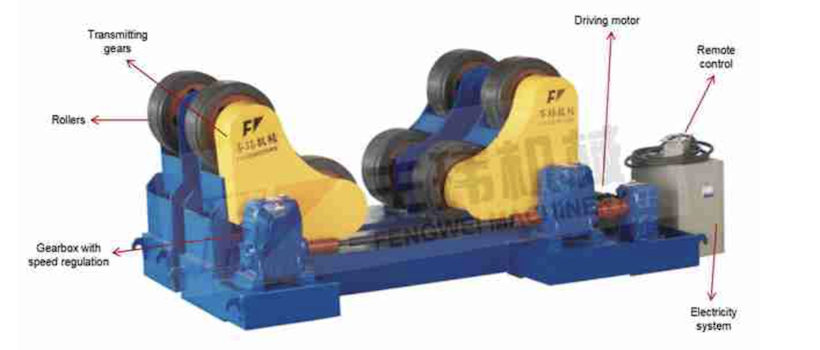 Structure of welding rotator
Structure of welding rotator
The welding rotator consists of a base, a driving roller, a driven roller, a bracket, a transmission device, and a power device drive. The transmission device drives the active roller and uses the friction between the active roller and the cylindrical workpiece to drive the workpiece to rotate to realize displacement, which can realize the horizontal position welding of the inner and outer circumferential seams of the workpiece and the inner and outer longitudinal seams. The automatic welding equipment can realize automatic welding. , It can greatly improve the quality of welds, reduce labor intensity, and improve work efficiency. The welding rotator can also be used with manual welding or as a device for testing and assembling cylindrical workpieces.
There are three main categories of popular welding rotators:
Self-adjusting welding rotator
The self-adjusting welding rotator mainly uses the mutual friction between the driving wheel and the workpiece to drive the workpiece to rotate. It is a commonly used auxiliary equipment in the welding automation equipment, and the welding rotator can pass the diameter of the workpiece The size is judged, and its center is changed from reaching the position where you want to weld. As a commonly used auxiliary equipment, it can also be used with welding positioner and welding manipulator to complete the welding and assembly of internal and external longitudinal seams that are difficult to weld, and realize automation.
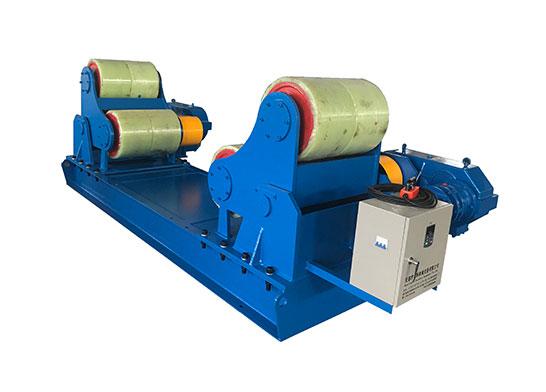 Self-aligning welding rotator
Self-aligning welding rotator
Adjustable welding rotator
The adjustable welding rotator is composed of a driving wheel and a driven wheel, and the driving wheel contains two motor drives. Generally speaking, by adjusting the speed of the motor, the welder can achieve stepless speed regulation through variable frequency speed regulation or electromagnetic speed regulation through the speed regulation device. When the welding rotator is working, the workpiece rotation line reaches a speed of 6-60 meters per hour, which can meet different welding requirements such as manual welding, automatic surfacing welding, automatic submerged arc welding, and various riveting of workpieces. The distance between the main and driven rollers can be adjusted by screw or screw indexing to meet the welding needs of different specifications of workpieces. The adjustable rotator can be regarded as extremely high for factory use.
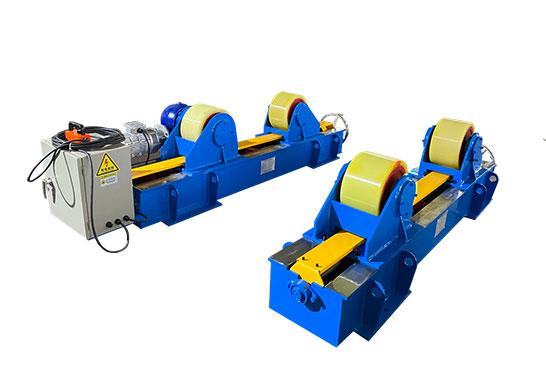 Adjustable welding rotator
Adjustable welding rotator
Anti-channeling welding rotator
The anti-channeling welding rotator is upgraded on the basis of the adjustable welding rotator, and the rollers of the anti-channeling welding rotator and driven frame are made up and down. As one of the bright spots, its photoelectric encoder can be mainly used to detect the movement of the workpiece during the welding process, and it can be more automated, and simple operation can control the lifting of the driven roller. The displacement detection frame is placed at one end of the workpiece, and the detection wheel is pressed on the end surface of the workpiece (the end surface must be processed). The detection wheel of the anti-channeling welding rotator can be moved by the movement of the welding rotator when it is working, and when the workpiece moves axially, the detection wheel will follow the workpiece, and the photoelectric encoder detector detects the movement and direction of the workpiece and changes it The signal is input to the system controller for processing. The controller will adjust the lifting stroke, lifting speed, and lifting interval time of the driven roller according to the amount of movement, and control the lifting according to the movement direction. The movement of the workpiece always fluctuates between -1.5mm and +1.5mm, so that the movement of the workpiece is limited to a certain range, which can meet the needs of welding.
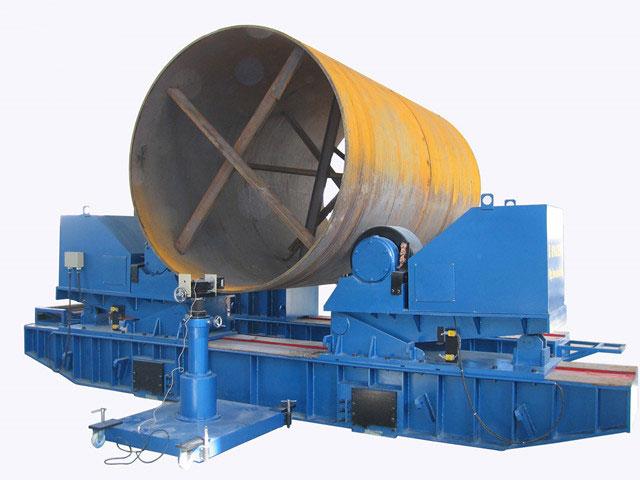 Anti-channeling welding rotator
Anti-channeling welding rotator
Note: If the device is powered on, there is noise, vibration, or the rollers are out of sync, etc., you need to power off for troubleshooting.
The welding rotator can be used in conjunction with the welding manipulator to support or drive rotation when welding pressure vessels and large-diameter pipes with longitudinal and circumferential seams. The welding rotor can meet the support of different diameter workpieces by adjusting the distance between the rollers.
Structural characteristics of welding rotator
1. This product has two groups as a set, namely active welding rotator and passive welding rotator. The active and passive welding rotators have four rollers, which are made of an inner iron core and an outer rubber structure, which are durable and have no vibration during use.
2. The operation of the active welding rotator is driven by two gearboxes synchronously. Through the speed-regulating motor, gearbox, controller, and other mechanisms, the speed of the workpiece can reach 0.1-1m/min.
3. The adjustable welding rotator can be adjusted by stepping screws; it can also be adjusted by hand or electric wire.
4. This product can be customized according to the special requirements of users, such as hydraulic jacking and tilting.